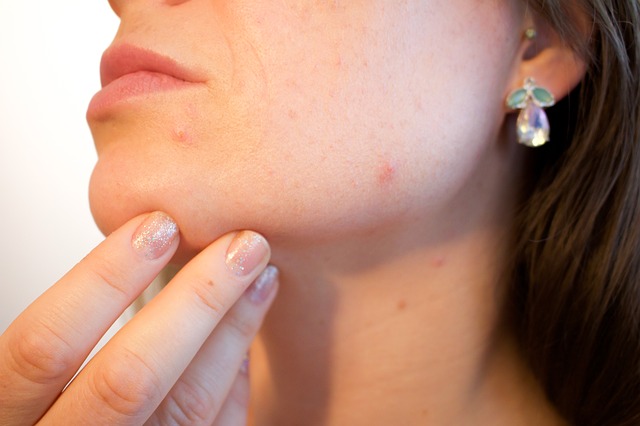Rosacea vs. Acne

You take good care of your body, inside and out. You stick to paraben and aluminum-free deodorant and organic period products. And you always remember to stop and breathe — or you remember to most of the time, anyway. The thing is, even if you practice exceptional self-care, it may be hard to tell if those occasional breakouts are rosacea or acne. Knowing the difference between rosacea vs. acne can help you treat flareups faster.
What Is Acne?
Acne is a chronic skin condition where pores become clogged and result in blemishes. The specific type of blemish depends mainly on the size of the pore. Large pores lead to blackheads, for example. Smaller clogged pores produce whiteheads. Some acne sufferers develop very deep, swollen and inflamed clogs called cystic acne that can be painful and may become infected.
Who Gets Acne?
Acne typically hits the scene when boys and girls are pre-teens, and it often goes away in a person’s 20s. Women are more likely than men to continue suffering from acne in their 30s and beyond, but acne is more prevalent in teenage boys than teenage girls.
What Does Acne Look Like?
All types of acne essentially look like bumps. Whiteheads are smaller and, as their clever name suggests, have white peaks; blackheads are larger and have black peaks. Cystic acne occurrences are often very large and red due to their excessive inflammation.
What Part of the Body Is Affected by Acne?
Virtually every part of your upper body is fair game when it comes to acne. It affects the face mostly, but breakouts can also occur on your back, chest, neck, and even your upper arms. Breakouts can be treated with prescription medication or with the same natural, gentle face washes you’d find alongside your essential oils and biodegradable pads.
What Is Rosacea?
Rosacea is also pore disorder that can cause tiny bumps, making it easy to see why it’s so easily confused with acne. What’s more, it’s often referred to as “adult acne” or “acne rosacea,” even though it’s not actually a type of acne. The specific cause of rosacea is unknown.
Who Gets Rosacea?
Anybody can develop rosacea, but it’s more common in women than it is in men. It typically affects slightly older men and women, too — as in age 30 and up. Got fair skin? You’re also more prone to rosacea.
What Does Rosacea Look Like?
Picture small, red bumps that look like pimples. Typically, a rosacea sufferer’s skin will flush, and then it’s bump time. If left untreated, these bumps can grow redder and more severe, giving the skin a ruddy, potholed appearance. Severe cases are rare, however.
What Part of the Body Is Affected by Rosacea?
Rosacea typically sticks to your cheeks and your T-zone — i.e., your forehead, nose, and chin. It doesn’t affect your back or other areas where acne breakouts can occur. Flareups are usually treated with antibiotics or certain prescription-only medicines that are also used to treat acne.
There’s more to self-care than all-natural face serums and organic cotton tampons — although they certainly help. Understand the difference between acne vs rosacea to receive the best possible treatment for your irritated skin.

